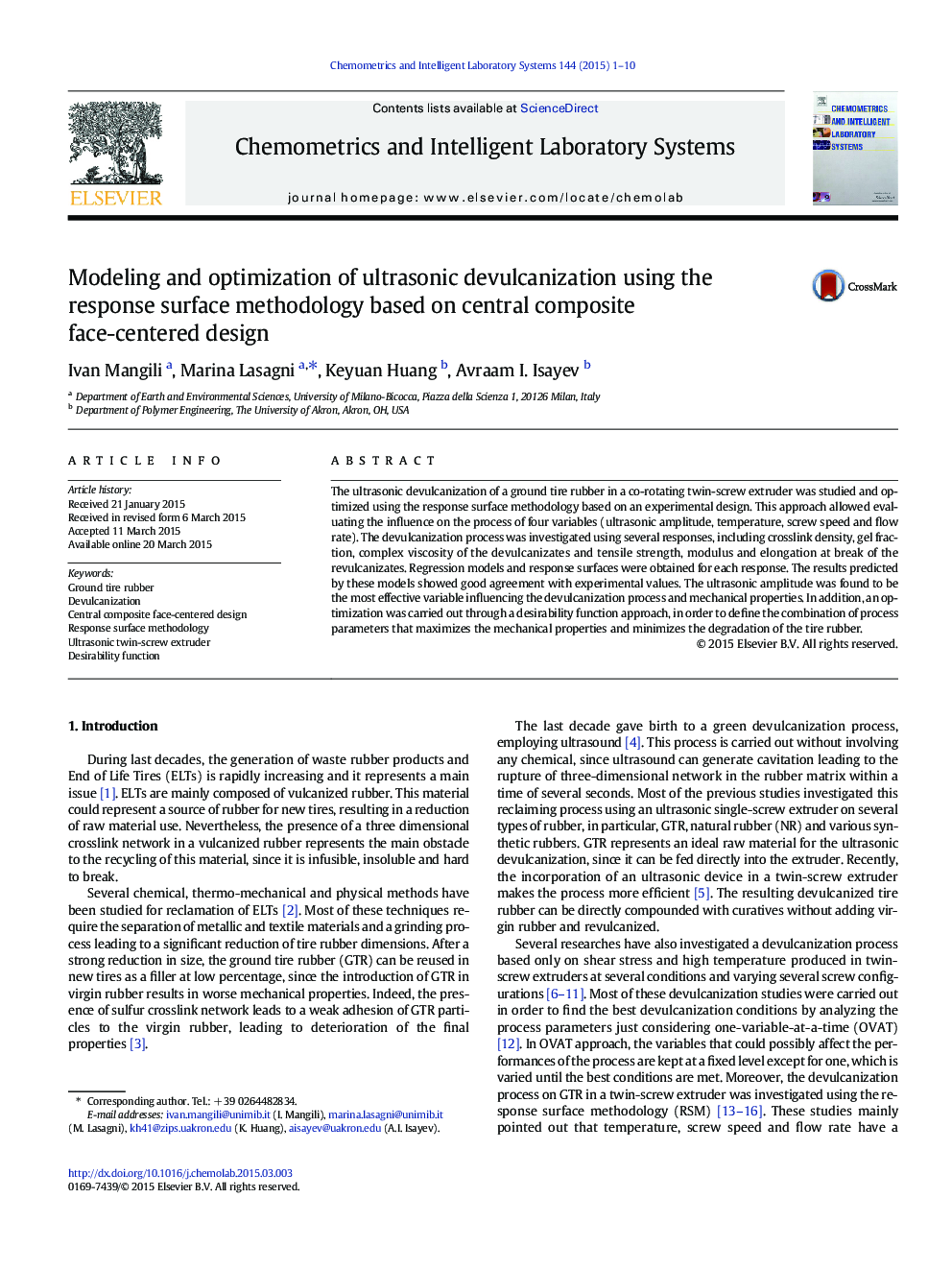| Article ID | Journal | Published Year | Pages | File Type |
|---|---|---|---|---|
| 1180415 | Chemometrics and Intelligent Laboratory Systems | 2015 | 10 Pages |
•Ultrasonic devulcanization of ground tire rubber in a co-rotating twin-screw extruder•Process optimization by response surface methodology and desirability functions•Analyzed variables: ultrasonic amplitude, temperature, screw speed and flow rate
The ultrasonic devulcanization of a ground tire rubber in a co-rotating twin-screw extruder was studied and optimized using the response surface methodology based on an experimental design. This approach allowed evaluating the influence on the process of four variables (ultrasonic amplitude, temperature, screw speed and flow rate). The devulcanization process was investigated using several responses, including crosslink density, gel fraction, complex viscosity of the devulcanizates and tensile strength, modulus and elongation at break of the revulcanizates. Regression models and response surfaces were obtained for each response. The results predicted by these models showed good agreement with experimental values. The ultrasonic amplitude was found to be the most effective variable influencing the devulcanization process and mechanical properties. In addition, an optimization was carried out through a desirability function approach, in order to define the combination of process parameters that maximizes the mechanical properties and minimizes the degradation of the tire rubber.
